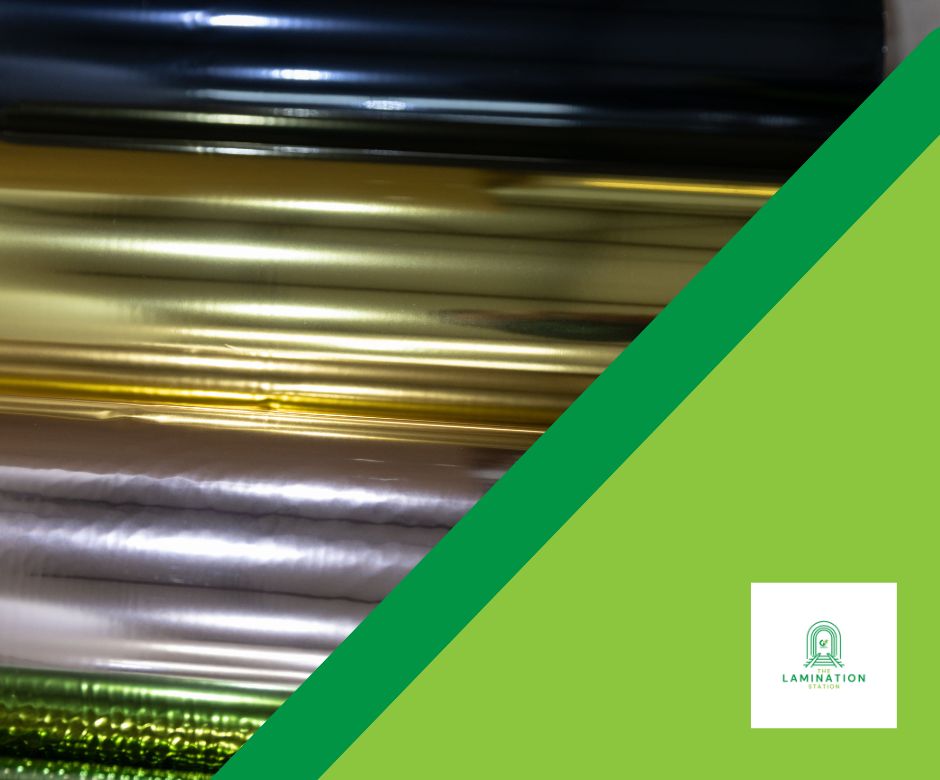Digital Toner Foils and Print-Receptive Films: Transforming Printed Materials with Style and Functionality
In the ever-evolving world of printing and graphic design, advancements in technology continually push the boundaries of creativity and quality. Among these innovative solutions that have gained popularity in recent years are digital toner foils and print-receptive films. These cutting-edge solutions offer a range of benefits, from enhancing aesthetics and durability to adding interactive elements to printed materials. This blog post will delve into the world of digital toner foils and print-receptive films, exploring their features, applications, and the advantages they bring to various industries.
If you would rather watch the rest of this blog in video format
Understanding Digital Toner Foils
Digital toner foils, also known as sleeking foils, are a newer foiling technique that has emerged as an alternative to the process of making up costly dyes used in traditional stamping. This process is ideal for print-on-demand jobs where short-run work or quick turnaround is required. The technique of using digital toner foils utilises heat and pressure to transfer the foil onto specific printed areas adhering to the substrate.
Digital toner foils provide a range of creative possibilities, allowing designers to experiment with different finishes, colours, and textures to achieve eye-catching and luxurious effects. By utilizing advanced software, designers can enhance the visual appeal of digital assets such as logos and illustrations. This technique adds a layer of depth and sophistication to digital designs, captivating viewers and evoking a sense of elegance and professionalism.
Exploring Print-Receptive Films
Compatible print-receptive films are designed to enhance the print quality, durability, and overall visual appeal of printed materials. These films are receptive to different printing techniques, such as offset, digital toner, or UV printing, making them versatile and suitable for a wide range of applications. Print-receptive films come in various finishes such as gloss, matt, soft touch, and anti-scratch, providing different visual effects and tactile sensations.
Enhancing Your Work
Digital toner foils, when combined with the use of print-receptive films, offer a powerful combination to enhance your work. Print-receptive films provide a receptive surface for the toner and thereafter the digital toner foil to adhere effectively, ensuring a smooth and flawless finish. By using digital toner foils with print-receptive films, designers can elevate the visual impact of printed materials, transforming them into stunning pieces that command attention and convey a sense of sophistication.
Different Types of Digital Toner Foils and Print-Receptive Films
Digital Toner Foils
- Metallic Foil: Adds metallic flecks to printed materials, creating a shimmering effect and visual interest. Available in Gold Gloss, Silver Gloss, Rose Gold, Black, Green, Blue, and Clear Gloss, among others.
Print-Receptive Films
- Gloss: Provides a glossy surface that enhances colour vibrancy and adds a professional look.
- Matt: Offers a non-reflective surface that reduces glare and adds a sophisticated touch.
- Matt Soft Touch: Creates a tactile experience with a velvety texture, making printed materials feel luxurious.
- Matt Anti-Scratch: Provides additional protection against scratches, ensuring durability and longevity.
Common Mistakes to Avoid
One common mistake is not using enough heat during the application process, which can result in silvering, de-lamination, or poor adhesion. Conversely, excessive heat can lead to specs or uneven foil application. Proper temperature control, workspace preparation, and adherence to manufacturer’s guidelines are essential for optimal results.
Tips and Tricks for Achieving the Best Results
- Use the right settings: Follow manufacturer’s recommendations for temperature settings.
- Clean surfaces thoroughly: Remove dirt and residue for better adhesion.
- Work slowly: Avoid bubbles or wrinkles by taking your time.
- Test first: Always test a small area before committing to a full project.
- Store correctly: Keep foils and films in a cool, dry place.
Applications
- Book Covers and Stationery: Adds a luxurious look and provides durability for frequent handling.
- Packaging and Labels: Creates eye-catching designs with metallic accents while protecting against wear and tear.
- Marketing and Promotional Materials: Enhances brochures, business cards, and flyers with unique visual effects.
- Wedding and Event Invitations: Brings elegance and sophistication with textured patterns and metallic finishes.
Conclusion
Digital toner foils and print-receptive films offer transformative possibilities for printed materials, enhancing their aesthetics, durability, and functionality. By understanding their features, applications, and avoiding common mistakes, designers can fully harness their potential to create visually striking and durable products that captivate and leave a lasting impression.

